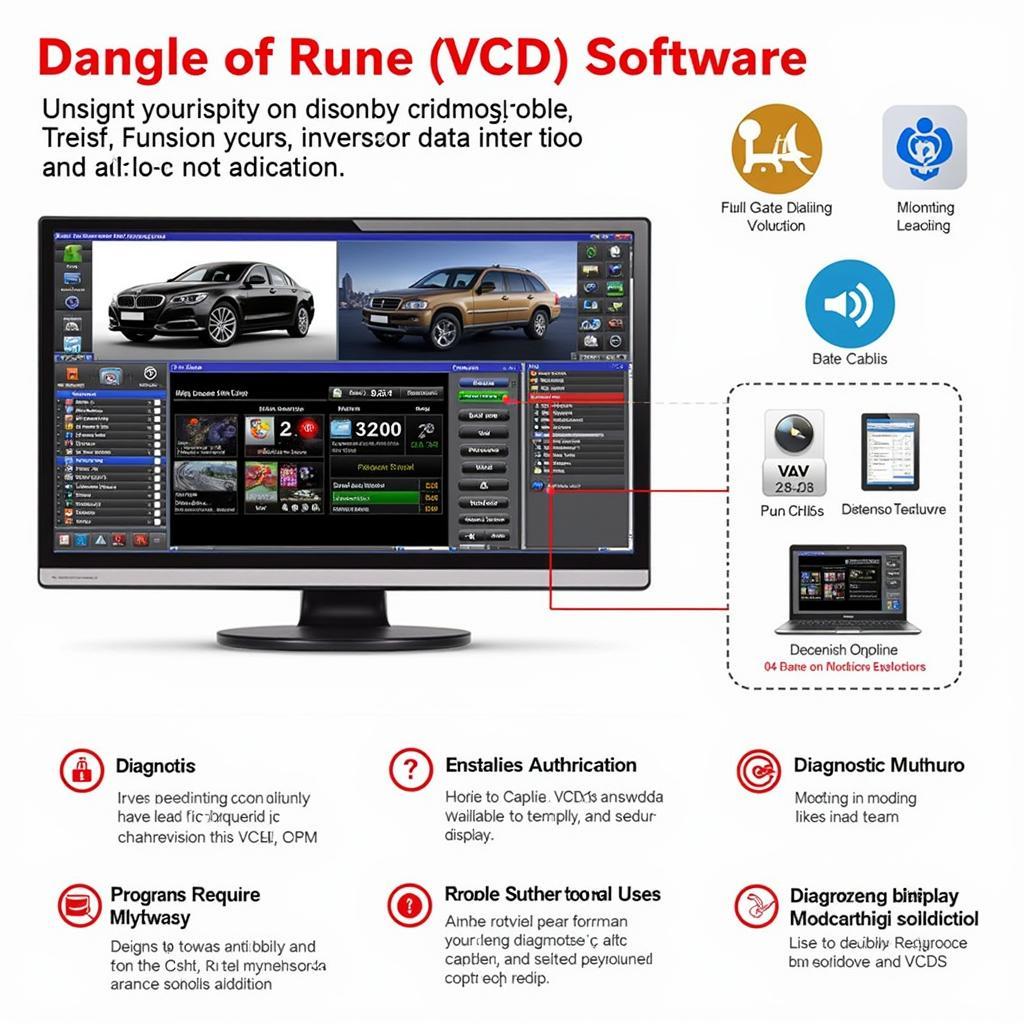EGR delete VCDS is a popular topic among car enthusiasts and mechanics. This article will delve into the intricacies of EGR systems, the implications of deleting them, and the role of VCDS in this process. We’ll explore the benefits, drawbacks, and legality of EGR deletes, providing you with a comprehensive understanding to make informed decisions.
Understanding the EGR System and the EGR Delete VCDS Process
The Exhaust Gas Recirculation (EGR) system is designed to reduce nitrogen oxide (NOx) emissions, a harmful byproduct of combustion. It works by recirculating a portion of exhaust gases back into the intake manifold, lowering combustion temperatures and thus reducing NOx formation. However, this process can lead to carbon buildup in the intake manifold and EGR valve, potentially causing performance issues. An EGR delete involves physically removing or blocking off the EGR system, and often requires software modifications using VCDS (VAG-COM Diagnostic System) to prevent fault codes.
Why Consider an EGR Delete with VCDS?
Some drivers and mechanics opt for an EGR delete to improve engine performance, prevent carbon buildup, and potentially increase fuel economy. They believe that the EGR system can reduce engine efficiency and contribute to maintenance issues. vcds egr delete This belief often stems from the idea that cleaner, cooler air promotes more efficient combustion.
The Potential Downsides and Legality of EGR Delete
While an EGR delete might offer perceived benefits, it’s crucial to understand the potential drawbacks. Deleting the EGR system can trigger fault codes, potentially affecting the vehicle’s diagnostic system. More importantly, tampering with emissions control systems is illegal in many jurisdictions. It’s essential to research and understand the legal implications in your area before considering an EGR delete.
Performing an EGR Delete with VCDS: A Step-by-Step Guide (Hypothetical)
This guide is for informational purposes only and should not be interpreted as an encouragement to perform an illegal modification. Always consult local regulations regarding emissions control systems.
- Diagnose: Use VCDS to scan for any existing fault codes before proceeding.
- Physical Removal/Blocking: Physically remove or block off the EGR valve and related components.
- Software Modification: Use VCDS to access the engine control module and disable the EGR functionality in the software. This step is crucial to prevent fault codes. can i delete egr with vcds
- Post-Delete Scan: After completing the physical and software modifications, use VCDS to rescan for fault codes and ensure the EGR system is successfully disabled.
“A proper EGR delete requires both physical and software modifications. Overlooking the software aspect can lead to persistent fault codes and diagnostic issues,” says John Miller, a seasoned automotive diagnostician.
Is an EGR Delete Right for Your Vehicle?
Deciding whether to perform an EGR delete is a complex decision with both potential benefits and drawbacks. vw t5 speed limiter removal vcds It’s crucial to weigh the perceived advantages against the legal and potential performance implications. Always prioritize compliance with local regulations and consider the long-term effects on your vehicle’s emissions and diagnostic system.
“While an EGR delete might seem appealing, it’s essential to consider the environmental impact. NOx emissions contribute significantly to air pollution,” reminds Dr. Emily Carter, an environmental engineer specializing in automotive emissions.
Conclusion
The EGR delete VCDS process involves intricate procedures that require a thorough understanding of the vehicle’s systems. Carefully consider the legal implications and potential downsides before modifying your vehicle’s emissions control system. Always prioritize compliance with regulations and consult with qualified professionals for guidance.
FAQ
- What is VCDS? VCDS is a diagnostic software used for Volkswagen, Audi, Seat, and Skoda vehicles.
- Is EGR delete legal? Legality varies by jurisdiction; check your local laws.
- Can I reverse an EGR delete? Yes, typically by reinstalling the EGR system and reversing the software modifications.
- What are the benefits of an EGR delete? Potential benefits include increased performance and reduced carbon buildup.
- What are the risks of an EGR delete? Risks include legal issues, potential diagnostic problems, and increased emissions.
- Will an EGR delete improve fuel economy? The impact on fuel economy is debatable and may vary depending on the vehicle.
- What are the alternatives to an EGR delete? Regular cleaning of the EGR system and intake manifold is a viable alternative.
Need assistance? Contact us via WhatsApp: +1 (641) 206-8880, Email: CARDIAGTECH[email protected] or visit us at 276 Reock St, City of Orange, NJ 07050, United States. We offer 24/7 customer support. You can also check out these helpful articles: how to reset vcds video editor and vcds.exe not found.

